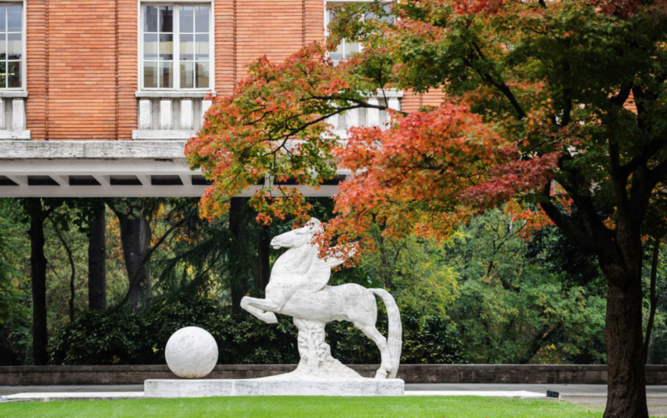Open Sites During FAI’s 2021 ‘Autumn Days’

This weekend, a number of privately-owned villas and institutes can be visited in Florence thanks to FAI’s “Autumn Days.” These normally-inaccessible properties, of historic and cultural interest, are open to the public this year just once, from Saturday, October 16 to Sunday, October 17, thanks to tours given by FAI volunteers with a minimum donation of €3.
FAI, or the Fondo Ambiente Italiano, is modeled after the National Trust found in the U.K. It is a non-profit organization with the objective of preserving and safeguarding sites of Italy’s physical heritage, which might otherwise be lost to time. Annually, FAI opens inaccessible landmarks to the public that the organization helps to preserve. For this edition, four sites comprising two villas and two institutes are open this weekend in and close to the city of the Renaissance.
Reservations are required: information on booking a reservation and background on each site can be found on FAI’s website, along with the exact address of each location.
IGM – Istituto Geografico Militare
Found in the center of Florence, vast geographical archives can be found in the libraries in this historic site of the Istituto Geografico Militare (Military Geographic Institute, or IGM). Founded in 1861 during the unification of Italy, the IGM was created to aid army forces. Today, it serves as the leading mapping agency of Italy thanks to its longstanding history of drawing maps which reveal Italy’s landscape in minute detail.
The Institute is located in the former convent of the Servite (Servi di Maria) order. One of the cloisters was designed between 1322 to 1335, while the entire complex underwent architectural changes in the 15th century commissioned to Michelozzo and Leon Battista Alberti.
Inside the IGM, visitors can see the grand collection of cartographic information contained in 200,000 volumes from 1570 to the present day, as well as articles and photographs dating as far back as 1865. Guests can appreciate the involved work of creating maps by hand and more modern methods, by touring the library and the museum, along with the site’s enduring architecture.
Istituto di Scienze Militari Aeronautiche
This military science institute is a storehouse of aeronautical knowledge accumulated by the military over the years. This site built on 2.5 hectares (six acres) in 1938 was once a training ground for postgraduate flight units; currently it provides advanced courses for air force officers in order to advance in rank.
Attendees can find a vast area to leisurely walk through, all the while observing the Rationalist-style architecture in the style of buildings in nearly a centuries-old military zone.
It is a location of scientific interest because it was found, interestingly enough, that the flora and fauna of the open green space of the nearby Cascine Park have adapted to the urban climate around it through the years.
Villa di Fontallerta
The grand Villa di Fontallerta, overlooking central Florence and directly below Fiesole, with its enduring architecture and surrounding pine trees, is opening its doors. Alongside the building itself, whose construction started in the 14th century, onlookers can view stretches of hedgerows accompanied by lime trees, in addition to olive groves, as another touch to the rustic environment. Inside, a comfortable establishment dating back over 600 years can be experienced in its antique glory. One of the building’s owners was Taddeo di Agnolo Gaddi, who purchased the property in 1506. Several generations of the Gaddi family were important painters of the late medieval period; Taddeo himself was a pupil of the ground-breaking artist Giotto, who bridged medieval and Renaissance styles.
Boccaccio mentioned Villa di Fontallerta in one of the tales of the Decameron.
Villa Salviati and the Historic Archives of the European Union
Belonging to the Salviati family for close to four centuries, Villa Salviati bears testimony to to the architecture of the 15th and 16th centuries. A little-known fact is that Villa sheltered Florentine residents seeking refuge during World War II in addition to a number of the city’s art works. After a restoration project beginning in 2000 to make room for the Historical Archive of the European Union (HAEU), it also hosts several organizations including the Department of History and Civilization (HEC) and the Department of Law (LAW), which are both part of the European University Institute (EUI).
The deep history of this site, from its Renaissance roots to its work with a multitude of contemporary institutions, can be seen along with its grandiose architecture for those who wish to see how past and present can co-exist.
Entry will be available to the public this weekend both on Saturday and Sunday. Villa Salviati, Istituto di Scienze Militari Aeronautiche and Istituto Geografico Militare will be open from 9:30 am to 5:30 pm on both days, while Villa di Fontallerta will be open from 10 am to 5:30 pm. (nelson matos)
